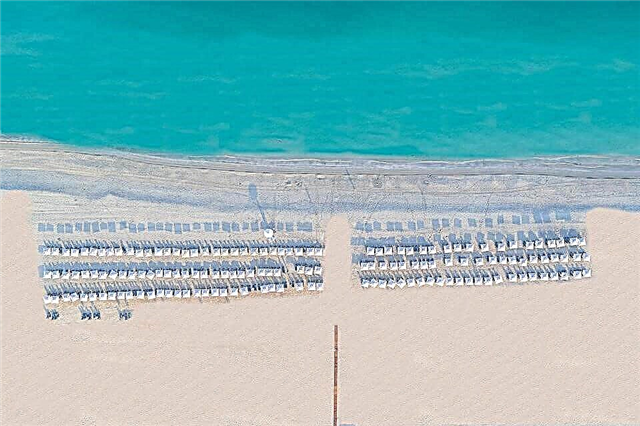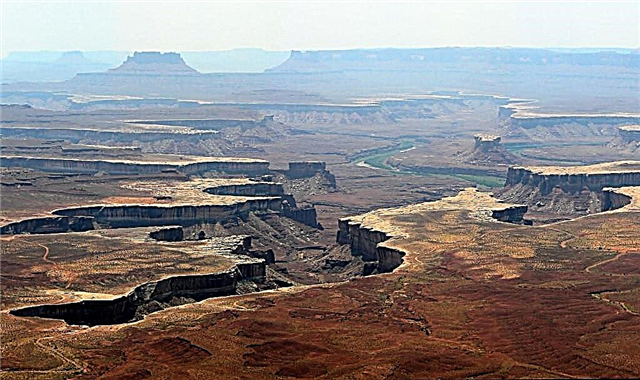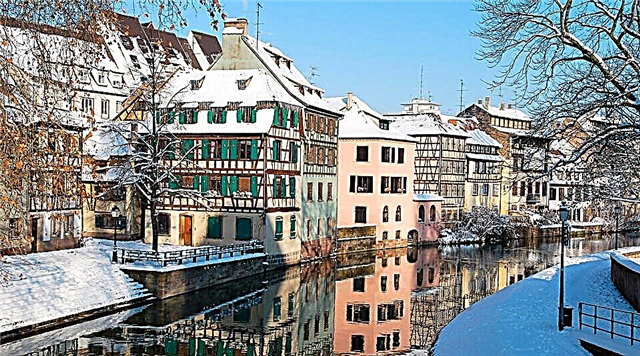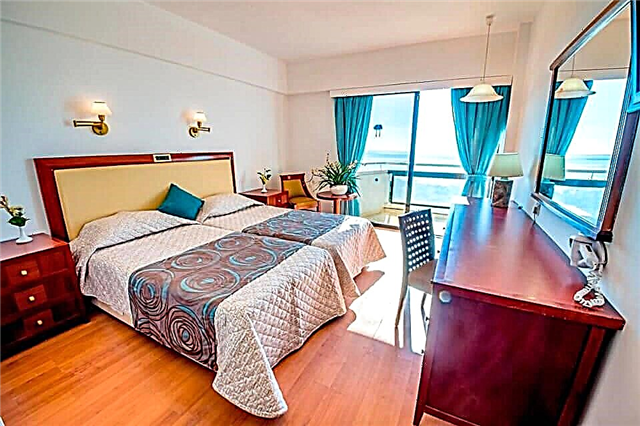Address: Italy, Florence
Start of construction: 1424 year
Completion of construction: 1446 year
Architect: Filippo Brunelleschi
Coordinates: 43 ° 46'30.0 "N 11 ° 15'12.6" E
Content:
Short description
Going on a trip to Florence, every tourist will be interested to know that it is here that the ashes of the last representative of the legendary Medici family are located, who after her death bequeathed all her fortune to a flourishing and magnificent Italian city.

View of the Basilica of San Lorenzo from the observation deck at the Duomo Santa Maria del Fiore Cathedral
The Church of St. Lawrence or the Basilica of San Lorenzo is located on the eponymous square of Florence - Pizza San Lorenzo, in it rests the last of the once powerful and world-famous Medici family, Anna Maria Ludovica.
Despite the fact that the grandiloquent epithets "beautiful", "majestic" are not suitable to describe this architectural structure, which, moreover, is not in the most beautiful place in Florence, the Basilica of San Lorenzo, built in the Renaissance style, is visited by tens of thousands every year. tourists from all over the world. The family basilica of San Lorenzo really deserves special attention, as it is one of the most ancient churches in Florence, the date of its foundation dates back to the 393rd year of our century.
Basilica of San Lorenzo: history
As mentioned above, the Church of San Lorenzo was built in 393 by order of the Archbishop of Milan, St. Ambrogio, in honor of St. Lawrence and the first Archbishop of Florence, St. Zenobius. The relics of St. Zenobius for three centuries from the 4th to the 7th centuries were within the walls of the basilica, and it was then that San Lorenzo was the Cathedral of Florence. The first significant reconstruction of the building took place in the 11th century: the church, built in the Renaissance style, was renovated in the Romanesque style in 1059.

View of the facade of the Basilica of San Lorenzo
In 1418, several wealthy citizens of Florence, including the first of the Medici family, Giovanni de Medici Bigguide, decided to invest their money in the construction of a new church. It is worth noting that the most significant financial investment was made by Giovanni Medici, who thus wanted to consolidate his high status and enter the upper strata of society.
The first author of the new project of the Basilica of San Lorenzo was the famous Italian architect Filippo Brunelleschi. Having designed the Old Sacristy, which was supposed to adjoin the existing church, Filippo Brunelleschi later develops the entire complex. However, the death of Giovanni de Medici in 1429 prevented the completion of the construction, which had just begun. After his funeral, work on the renewal of San Lorenzo was continued only in 1441 under the leadership of Cosimo Medici, who invites a new specialist, Michelozzo de Bartolomeo, as an architect. Cosimo de Medici, better known in history as Cosimo the Elder, was buried in the underground crypt of San Lorenzo, under its central altar. Since then, the Basilica of St. Lawrence has become the burial place of all members of this Florentine family.

An interesting fact is that the facade of the Church of San Lorenzo was never reconstructed, however, to this day it remains unfinished... According to historians, the reason for the unfinished construction work was a disagreement between Pope Leo X Medici and Michelangelo. According to Michelangelo's idea, the facade of the church was to be faced with Carrara marble, which was mined in the mountains of Central Italy, while Leo X did not agree with the choice of the famous Italian artist, architect, sculptor, and wanted to decorate the facade of the basilica with stone from the quarries of Pietrasanta.
At the same time, Pope Leo X Medici orders Michelangelo to develop a project for the New Sacristy or Chapel, in which he wanted to bury the bodies of the Medici family members who died at a young age: Lorenzo di Piero and Giuliano de Medici. This work is considered one of the most important and implemented projects of the master. If earlier it was customary in the chapel to place tombs and tombstones in the center of the room, then Michelangelo decided to break these laws, thus making a revolution in architecture: he placed sculptural compositions along the walls.

View of the Chapel of Princes from the street
In addition, Michelangelo became the author of a project called the Medici Library, which at the end of the 20th century was transformed into the Medici Chapel Museum. Tombstone sculptural compositions created by the famous artist attract numerous tourists to this place. And besides this, students of art academies constantly come here, who learn from the examples of the masterpieces of Brunelleschi and Michelangelo.
Church of San Lorenzo: our days
Despite the outward unattractiveness of the Basilica of San Lorenzo, every tourist, once in the temple, can get acquainted with the numerous masterpieces that are not only adornments of the interior decoration of the church, but are also recognized as real works of art. Among them, it is necessary to note the works of the great master Donatello: two bronze pulpits dating from 1460, and the sarcophagus of the Martelli family.
The interior of the Old Sacristy amazes with magnificent medallions, bas-reliefs, lunettes made by the great Donatello. It also houses the sarcophagus of Piero and Giovanni de 'Medici, made by Verrocchio. The dome of the Old Sacristy is decorated with a unique fresco depicting the sun and stars in the sky, known at that time.

Basilica view from the west
The new Sacristy, the project of which, as mentioned above, was Michelangelo, keeps within its walls the monumental tombs of the two dukes, decorated with allegorical sculptures of the gentlemen themselves sitting on the throne and allegorical sculptures of time: Day, Night, Twilight and Dawn. In the center of the chapel is the sculptural composition "Madonna and Child", on both sides of which there are statues of St. Cosmas and St. Damian. The author of the last works are the students of Michelangelo.
The Chapel of the Princes, which is an octagonal room, and has the second largest dome in Florence (second only to the dome of the Duomo Church), amazes travelers with unique marble decorations and frescoes depicting the coats of arms of the cities of the Tuscan Duchy. At one time, the Medici wanted to place a particle of the Holy Sepulcher in the chapel, but this idea, for certain reasons, was never implemented.
The interior of the Basilica of San Lorenzo fascinates tourists with its number of columns, different in diameter and devoid of any decorations. It is believed that the colonnade of the church is the work of the master Vasalleto. The magnificent floor pattern, which is somewhat reminiscent of a beautiful carpet, with seemingly endless patterns of church themes, also attracts attention.

Basilica interior
The Basilica of San Lorenzo receives visitors every day, except Mondays. Entry to the church is free only on Sundaywhen Mass is celebrated in the temple. On other days, admission is paid: the ticket price is 3.5 euros.











